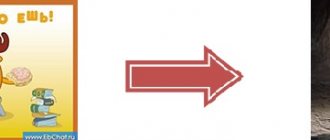PROTOCOL OF PARENTS MEETING “Prevention of child road traffic injuries”
PROTOCOL No. 6
PARENT MEETING in grade 2 "A"
"16" February 2021 Time 18.00. office 1-11
The number of students on the list is 24 people.
Number of parents present: 21 people.
PARENT MEETING AGENDA:
1. Lecture on the theme of the meeting “The Secret World of Our Children, or the Child and the Street.” 2. About nutrition and vitaminization in the spring. About the incidence of ARVI and influenza. 3. Prevention of children's road traffic injuries. 4. Miscellaneous.
LISTENED TO:
On the first question
Psychologist L. V. Vedmenskaya gave a lecture.
The meaning of friends and friendship in the life of a child of primary school age. Age-related characteristics of the perception of friendship by a child of primary school age. The child’s position in the group and his sense of self. Popular and unpopular children in the team. Reasons for a child’s popularity and unpopularity among peers. Comfort and discomfort of the child. Positive and negative effects of the company's influence on a child of primary school age. Loneliness of a child. Child's problems in choosing friends. Parental behavior strategy: tact, correctness, desire to understand and help. We decided:
the lecture took place, take note of the information.
On the second question
A doctor spoke and reminded that vitamins are very important in the life of the body, and their deficiency or absence causes serious health problems.
The child’s body is especially sensitive to vitamin deficiencies. And here the question was raised that, according to Rospotrebnadzor, as a result of a decrease in immunity, an increase in the incidence of ARVI and influenza is predicted. Follow preventive measures against influenza. We decided
to take note of the information and include vitamin-rich foods in our diet.
On the third question
class teacher O.N. Trashchenko spoke. Forms of work on the prevention of children's road traffic injuries at school were presented: individual conversations, consultations, games, classes on this topic, lessons and more. A film was shown about childhood injuries, the causes of child mortality on the roads, and the need to use special child restraints for personal cars.
The chairman of the parent committee Tikhonova M.K. spoke - “Flickers and the safety of children on the roads.”
A pedestrian with a flicker is visible in the headlights of a car from a distance of up to 400 m! Wearing a flicker reduces the risk of hitting a pedestrian at night by 6 times. Flickers save lives. Flicker is a retroreflector that can save a pedestrian or child on the road. Providing visibility in low light conditions, a reflector becomes practically the only way to identify yourself on the roadway.
Decided:
1. Activate and improve the work of students in the prevention of child road traffic injuries.
2. Take note and follow the information for parents (legal representatives) about the use of child restraint devices (for drivers of private cars).
3. Buy flickers and hang them on the backpack of each student in the class.
.
Secretary:
Zapotylok I.A.
Classroom teacher:
Trashchenko O.N.
Parent meeting on the topic “For parents - about road safety”
Parent meeting
on the topic “For parents - about road safety”
Target:
organizing joint activities of parents and teachers to prevent children's road traffic injuries and improve the culture of road users.
Tasks:
Encourage parents to think that compliance with traffic rules is the most important thing for preserving the life and health of their children.
Familiarize parents with some rules and reminders that will facilitate the most effective learning of traffic rules.
Preliminary preparation for the meeting
:
Parents of students fill out a questionnaire for parents a week before the meeting and submit it to the class teacher for analysis. (Annex 1)
Preparation of instructions for parents “How to teach a child the rules of the road.” (Appendix 2)
Plan for the meeting.
- Relevance of the chosen topic.
- Survey results.
- Lecture by teachers.
- Business game for parents “Trapped on the roads” and drawing up a memo for children.
- Reminders for parents.
- Reflection.
- Assignment for parents.
1. Relevance
Hello, dear parents! Today we have gathered to discuss a very important issue. We will talk about the rules of the road and our children, about how important it is to teach them the rules of the road. This is a very serious issue that requires a lot of attention from adults: both teachers and parents.
2.
Survey results.
Before the meeting, parents were given a questionnaire to complete.
It consisted of 5 questions:
1
Do you teach your child the rules of the road?
2
At what age did you start introducing them to him?
3
Have you shown your child a safe route from home to school and back?
4
Can you consider yourself a role model for obeying traffic rules?
5
Does it sometimes happen that your child “teaches” you a lesson in road safety?
Survey results:
1. Do you introduce your child to the rules of the road?
14 out of 19 people answered “yes”.
2. At what age did you start introducing him to them:
From 3 years old - 12 people.
From 4 years – 5 people.
3. Have you shown your child a safe route from home to school and back?
19 out of 19 people answered “yes”.
4. Can you consider yourself a role model for following traffic rules?
11 people answered “yes”.
8 people answered “no”
5. Does it sometimes happen that your child “teaches” you a lesson in how to behave safely on the road?
7 out of 19 people answered “yes”.
3. Lecture
(multimedia presentation).
Who among you does not want to see your child healthy and unharmed? And everyone thinks that their smart and sensible little one will definitely not end up under the wheels of a car. But sometimes it’s not easy for a child to avoid a traffic accident.
Injuries sustained when a child is hit by a vehicle are especially serious. The fact is that such an injury occurs “double”: first, the car, hitting a person, overturns him onto the hood, and then he falls onto the roadway. The result is two strikes! Moreover, it is the second blow that is more dangerous, because when children fall, they most often hit their head (the ratio of the weight of the head to the total body weight of a child is greater than that of an adult). Injuries can also be severe when hitting sharp corners, as well as rigid vehicle structures.
A road traffic accident is a tragedy, in which case the child’s “personal” experience is unacceptable and must be replaced by the experience accumulated by society. Therefore, it is so important to teach children how to behave on the street, taking into account their psychological and physiological characteristics.
Psychologists have long established that children, due to their age-related psychological characteristics, cannot always correctly assess the instantly changing situation on the road, and often overestimate their capabilities. Sometimes they simply repeat what adults do in such cases. Adults are trying to cross the street. And they run across (though not always successfully), which is helped by the ability to estimate the distance to the car and assess the situation on the road. But these are adults, and what about children? The child's body is in a state of formation. Many processes are mobile and unstable. Hence the different reactions of children and adults to the same road situations.
Special studies have established that children cross the road differently than adults. Adults, approaching the roadway, observe from afar and assess the current situation. Children begin observing only when they approach the edge of the road or are already on it. As a result, the child’s brain does not have time to “digest” the information and give the correct command to action. In addition, young children transfer their ideas from the microworld of toys into the real world. For example, the belief that real vehicles can actually stop in place just as instantly as toy vehicles.
The growth of a child is a serious obstacle to viewing the surrounding environment: due to standing vehicles, he cannot see what is happening on the road, while at the same time he himself is not visible to drivers because of the cars. A child may not hear the sound of an approaching car or other signal, not because he does not know how to distinguish them, but because he lacks constant attention. Children's attention is selective and concentrates not on objects that pose a danger, but on those that currently interest him most, and the speed of perception of a sound signal in children is much less than in adults.
Children have a shorter step and a 15-20% smaller field of view, and a slower reaction to danger (3-4 seconds instead of 0.8-1 in adults). When a large truck approaches, even if it is moving at high speed, the child is less likely to risk crossing the roadway, but underestimates the danger of a small passenger car approaching at high speed.
Children are highly influenced by emotions. Joy, surprise, interest in something make you completely forget about the danger to which they may be exposed. Even differences in temperament influence the behavior of children on the road. This is clearly evident in the style of crossing the road.
So, for example, in a choleric child with his inherent “intolerance”, when there is, from his point of view, a long delay when crossing the road, and if the “right” bus or someone he knows is standing on the opposite side, a specific state of emotional distress often arises. discomfort, since such a delay clearly contradicts its psychophysical essence. The child strives to interrupt such a delay even at the expense of increasing risk. He begins to maneuver between cars or cross the road in front of nearby vehicles.
A child with a melancholic type of temperament, who gets lost in difficult situations, begins the transition in a mode of mental stress. And if we consider that he has to cross the roadway several times during the day, then excessive mental stress, irritation, fatigue gradually accumulate and, ultimately, a feeling of fear arises. Therefore, every parent should be well aware of the temperamental characteristics of their child in order to take them into account when teaching safe behavior skills on the road.
The more difficult the situation for a child, the slower and less correct he makes a decision.
Is it possible to do something to make the right decision on the road correctly and on time and avoid serious consequences? What should a driver do in a difficult situation on the road, and what should a pedestrian do? Alas, most often people think about this only when the fact of a traffic accident has happened. And only then they analyze: “Was there a way out?” And the victims themselves give a lot of options in which they could have avoided the tragedy.
We all learn the Rules of the Road in a “refined” form, i.e. perfect form. But in life, we often see something completely different. It turns out that pedestrians can cross the road when a traffic light is red, and drivers don’t shy away from this: they can drive through a “red” light, they can even refuse to let a pedestrian pass at a pedestrian crossing... And how many drivers are detained every day by traffic police officers while drunk and, increasingly, on drugs? !
First of all, I would like to focus on the prevention of accidents involving pedestrians. As the analysis shows, most collisions with children occur because they do not notice cars that are dangerous to them. Children quite often transfer their ideas from the microworld of toys into real life. For example, it sometimes seems to them that a real car can stop as quickly as a toy car with one movement of the hand. Therefore, from early childhood, children should know that vehicles cannot stop instantly. The behavior of a pedestrian must be predictable, only then will the driver have the opportunity to make the right decision.
Now it is very difficult to talk about teaching children traffic rules. In the modern transport world, we are forced to teach children safe behavior on the roads, but a slightly different concept. Teaching children the rules that are set out in the Traffic Rules brochure is dangerous. Why? Yes, only because drivers often violate them and we must warn children about this. Speaking about the fact that you need to cross the road at a pedestrian crossing, it is vitally important for us to form a warning stereotype of behavior. It is only the traffic rules that say that vehicle drivers are required to give way to pedestrians crossing the roadway at a pedestrian crossing. In fact, not all drivers are law-abiding and thoughtful. A fairly large army of motorists will step on the gas in front of a pedestrian crossing in order to be faster than a pedestrian, to get ahead of him at the pedestrian crossing.
So, it is necessary to take into account that the main way to develop behavioral skills in children is through observation and imitation of the behavior of adults and, above all, parents.
Many parents, without understanding this, teach their children incorrect and dangerous behavior by personal example.
4.Business game for parents “Trapped on the roads” and drawing up a memo for children.
Work in groups.
Most accidents involving children occur in the same repetitive situations. Children continually fall into traffic traps because they simply do not know how to solve them.
Let's look at the trap situations together and pay attention to the dangerous moments along the way. And the result of this work will be the development of a reminder for children.
(Each group receives cards with images of dangerous situations on the road. Parents in the group analyze the situation and present their solution. On the slides: trap situations with conclusions)
Trap 1. One of the most common situations leading to an accident is a situation where visibility is blocked. These are moments on the road when the danger is hidden from the pedestrian behind some objects. In this case, the danger is posed by a moving car that the pedestrian cannot see, and for the same reason the driver of a passenger car does not see the pedestrian. Children tend to perceive cars parked at the edge of the road as some kind of protection. This myth needs to be destroyed, and the sooner the better.
Trap 2. Large vehicles pose a great danger on the road. They block the view, so vehicles behind it are not visible. Most often, pedestrians who are in a hurry to cross the roadway in front of the “nose” of a shuttle bus find themselves in such a trap situation.
Trap 3. You cannot walk around the bus either in front or behind. The phrase “Pass the bus in the back and the tram in front” is extremely dangerous in the modern transport world. A large number of buses accumulate at public transport stops, whose drivers, unfortunately, are more concerned not with safety, but with the desire to be first at the next stop. Public transport stops are designed in such a way that there is either a pedestrian crossing or an intersection next to them. But if there is neither one nor the other, then there is no need to despair. The goal of a safe crossing is to ensure that the roadway is open to view in all directions. To do this, you need to move away from the bus at such a distance that the road is clearly visible in both directions, or wait until the vehicle leaves and, following the rules of caution, cross to the opposite side of the road.
Trap 4. A slowly approaching car is dangerous because another car can pull out at a higher speed from behind it at any moment. Often a pedestrian, noticing a slowly approaching car, decides that he will have time to cross the road and decides to cross. But not everyone knows that a bus or other large vehicle blocks the view, and, therefore, does not guarantee safe passage across the roadway.
Trap 5. This clearly shows the danger of a car that has just passed. Usually, having passed a vehicle moving on the left, pedestrians rush to cross the roadway. However, in the first seconds, the car that has just passed hides those traveling in the opposite direction.
Trap 6. Driving across the road without stopping causes a large number of accidents. The habit of stopping at the edge of the roadway to observe must be developed by you. Here it is appropriate to talk about the “dark basement rule”. When opening the door into a dark room, the first thing we do is stop. Then we stop and listen. We will do all this at the level of intuition, because the darkness and the unknown will force us to do it.
Trap 7. There cannot be one algorithm for crossing the roadway, because the roads are different: with two-way and one-way traffic, traffic lanes can be single-lane or multi-lane. One general rule is that before you start crossing, you need to make sure it is safe, try to cross the roadway in one go and, unless absolutely necessary, do not stop in the middle of the roadway. This is a dangerous road trap.
Trap 8. The most dangerous places on the roadway are intersections and public transport stops. In the area of stops, it is easy to fall into the traffic trap of “concentration of interested attention.” For people rushing to the bus, the angle of lateral vision is greatly narrowed, therefore, attention is dulled.
Children are always attracted to what interests them. You need to know that parents quite often drive their own children into this trap. Calling over children who are on the opposite side of the roadway is very dangerous. Children's response to sounds is slow. Therefore, in response to the cry “Stop!” they react late, while traffic on the roadway does not stop or slow down.
Trap 9. Deserted street trap. On so-called deserted streets, where traffic flows are not intense, pedestrians relax. They allow you to walk on the road, children play and ride bicycles. However, even on such quiet streets you have to be careful. When crossing, look both ways. Walk along the edge of the roadway towards the traffic flow. And look back if you hear the sound of an approaching car.
Trap 10. Don’t forget about road-hazardous habits. Adults often carelessly hold a child's hand and he can break free at the most inopportune moment. Starting from preschool age, everyday habits begin to accumulate in the child: step back without looking, or, on the contrary, run forward without looking around.
You should not frighten your child with dangers on the road. He does not need to be afraid of her and terribly afraid of passing cars. The feeling of fear puts a person into numbness and the more complex the situation, the more inappropriate his actions will be, in this case. But we need to start working on cultivating a reasonable sense of caution now. We also need to learn to observe now. Pay attention to turn signals and brake lights. Transport moves not only along the roadway, but also in courtyards, where children are sometimes alone. Therefore, you have to navigate on your own. The more you reason and pay attention to certain features of traffic, the more ready your child will be to participate in traffic.
5. Memo for parents and children.
I would like everything said at this meeting to be remembered by you. To do this, each parent will receive a “Memo about traffic rules.” Read it often and discuss various traffic situations with your children.
Each parent is given booklets-reminders on traffic rules and is asked to complete homework for parents - together with the child, draw up and arrange the reminders, then bring them to school, for the subsequent organization of an exhibition in the classroom.
6. Reflection.
Business game.
Continue the sentence: Today I will once again remind my child that...
Classroom teacher:
When teaching a child the Rules of the Road, an adult must clearly understand what needs to be taught and how to do it more effectively. He himself must be well versed in road situations. Therefore, you should not only analyze your life experience in advance, but also study the necessary literature on the topic “Road Rules”.
What and, most importantly, how well we teach a child, what skills of safe behavior on the street we instill in him, will protect him throughout his life.
Bibliography:
1. Road safety: training and education of primary schoolchildren: Educational and methodological manual for educational institutions and additional education systems / Ed. ed. V.N. Kiryanova - M.: Publishing House Third Rome, 2005. 2. Maksinyaeva M.R. Life safety classes for younger schoolchildren. – M.: TC Sfera, 2002. 3. Three traffic lights: Didactic games, scenarios for leisure evenings: A book for a kindergarten teacher: From work experience / V.A. Dobryakova, N.V. Borisova, T.A. Panina, S.A. Uklonskaya; Compiled by T.F. Saulina. – M.: Education, 1989.
4. Three traffic lights: Familiarization of preschoolers with the rules of the road: for working with children 3-7 years old. – M:. Mosaic-Synthesis, 2009. – 112 pp.: color incl. Saulina T.F., 2008
Additional sources:
https://www.zanimatika.narod.ru
https://www.liveinternet.ru/users/vsjo_dlja_doshkoljat/post271506173#
https://www.google.ru
Appendix 1. Questionnaire for parents
1
Do you teach your child the rules of the road?
2
At what age did you start introducing them to him?
3
Have you shown your child a safe route from home to school and back?
4
Can you consider yourself a role model for obeying traffic rules?
5
Does it sometimes happen that your child “teaches” you a lesson in road safety?
Appendix 2. Booklet-memo “About traffic”
Appendix 3. Illustrations for group work “Trapped on the roads”
Appendix 4.
The best reminder (baby book) from the exhibition.







